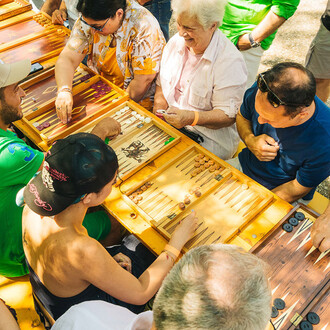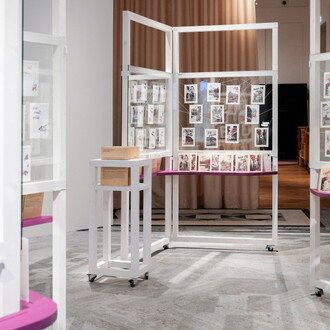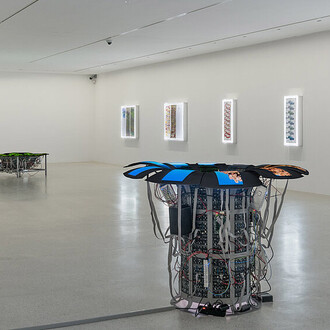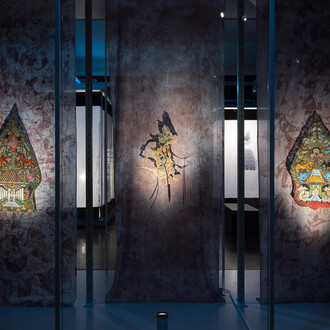Its unique mission of working with books and graphic artworks as a symbiotic whole is what so strongly distinguishes MAK Library and Works on Paper Collection from other art libraries. In its collection, preservation and research of scholarly writing—from the Middle Ages to the present—it communicates the three pillars of the institution’s museological foundation. Beyond publications pertaining to literature, to art and to arts and crafts, it also encompasses a graphic art and photo collection set up with the idea of building a collection of models.
From the very beginning, the collecting strategy also paid special attention to the reception of non-European cultures and built up a multinational system of agents upon which the holdings’ international character was to be founded. Immediately following the museum’s establishment in 1863, efforts commenced to establish a network of worldwide cooperation among cultural institutions—as evidenced by a letter written to the offices of Austria’s consulates general worldwide requesting both support for the museum’s interests and the forwarding of relevant publications. This strategy led to the acquisition of items including the first 50 of today’s 120,000 photographs from the South Kensington Museum (today’s Victoria and Albert Museum) for the collection in Vienna.
The library encompasses 250,000 volumes including printed works, incunabula and manuscripts produced between the 15th century and the present. Around 400,000 works on paper, including ornamental engravings, selected template sheets, hand drawings, watercolors and plans by artists and architects ranging from the Renaissance to the present day, as well as a poster and commercial graphic art collection and a photo collection, represent the basis for scholarly research.
One of the highlights is the 15,000-page collection of ornamental engravings. Its cornerstone was a group of 5,000 pages from the collection of Leipzig art dealer Wilhelm Drugulin; these were purchased during the year in which the museum was founded and listed under the inventory number “1.” As sources of inspiration for craftspeople, architects, builders and artisans, the engraved models—by artists including Albrecht Dürer, Frans Huys and Cornelis Floris—were quick to find corresponding applications among the broader circle of applied artists, a fact which underlines the considerable relevance of these holdings to the MAK’s mission.
1866 saw the arrival of the legacy of porcelain producer Wiener Porzellanmanufaktur [Vienna Porcelain Manufactory], one of the collection’s most valuable groups of holdings. Following difficult negotiations, the MAK also succeeded in purchasing next to carried out objects, the entire library (200 works in 335 volumes), the 5,700-page collection of patterns and the order books of this world-famous manufactory.
A purchase which has remained among the collection’s most sensational took place at the Vienna World’s Fair of 1873. With the 60 pages from the Indo-Persian heroic epic Hamzanama from the reign of Akbar the Great, written and illustrated between 1557 and 1577, the MAK Library and Works on Paper Collection owns a larger portion of this valuable, originally 1,400-page manuscript than any other single museum.
The most important holdings also include artist and company legacies, above all the ca. 17,000 design sketches from the archive of the Wiener Werkstätte, the archive of drawings from the Danhauser Furniture Factory and the pattern sketches of chandelier company Bakalowits and glass manufacturer J. & L. Lobmeyr. The legacies recently purchased and/or received as donations from the architects Carlo Scarpa and Edmund Moiret as well as from the commercial graphic designers Joseph Binder, Ernst Deutsch-Dryden and Stefan Sagmeister help draw an arc to the present day.
Another internationally significant collection segment is the “Baroque Library” established during the 19th century, which traces the highlights of book culture with its collection of 2,325 illustrated volumes. Among these are cimelia such as the Schedel’sche Weltchronik (the Nuremberg Chronicle), Sebastian Brandt’s Narrenschiff (Ship of Fools), the complete works of Giovanni Battista Piranesi and important treatises on architecture.
The tradition of artistically designed books has been documented by the MAK since its founding; starting from model works by English artists including William Morris and Walter Crane to French influences imported by Felician Freiherr von Myrbach and their impact on the art book activities of the Wiener Werkstätte, Secession, Bauhaus and Russian Constructivists, the collection extends all the way to important examples of so-called artists’ books from the 21st century.
Major works of Viennese modernism by Josef Hoffmann, Oskar Kokoschka, Bertold Löffler, Otto Prutscher and Franz von Zülow came to the MAK through its close ties to the adjacent Wiener Kunstgewerbeschule [Vienna School of Arts and Crafts]. The highlights include the nine extant parts of Gustav Klimt’s cartoon series for the mosaic frieze in the dining room of Palais Stoclet in Brussels (exhibited in the MAK Permanent Collection), which was realized as a Gesamtkunstwerk by Josef Hoffmann and the Wiener Werkstätte, as well as a gesso panel for the music salon of the Waerndorfer family by Margaret Macdonald Mackintosh and Koloman Moser’s designs for the stained glass windows of Otto Wagner’s Kirche am Steinhof (Church of St. Leopold) in Vienna.
















